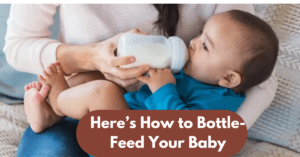If you’re breastfeeding your baby, you probably don’t need to be told how to bottle-feed your baby; it’s only if you’re switching to formula that this advice will come in handy.
Here’s How to Bottle-Feed Your Baby

Liyana Parker
Lorem ipsum dolor sit amet, consectetur adipiscing elit, sed do eiusmod tempor incididunt ut labore et dolore magna aliqua. Ut enim ad minim veniam, quis nostrud exercitation ullamco laboris nisi ut aliquip ex ea commodo consequat.






Leave a Reply
You must be logged in to post a comment.